

HistoryWorld - History and Timelines. Laocoön and His Sons. Laocoön's head The statue of Laocoön and His Sons (Italian: Gruppo del Laocoonte), also called the Laocoön Group, has been one of the most famous ancient sculptures ever since it was excavated in Rome in 1506 and placed on public display in the Vatican,[2] where it remains.

Exceptionally, it appears to be identifiable with a statue praised in the highest terms by the main Roman writer on art, Pliny the Elder. The figures are near life-size and the group is a little over 2 m (6 ft 7 in) in height, showing the Trojan priest Laocoön and his sons Antiphantes and Thymbraeus being attacked by sea serpents. Pliny attributes the work, then in the palace of Emperor Titus, to three Greek sculptors from the island of Rhodes: Agesander, Athenodoros and Polydorus, but does not give a date or patron. Subject[edit] Oblique view The group as it was between c. 1540 and 1957, with Laocoön's extended arm; the sons' restored arms were removed in the 1980s. History[edit] Ancient times[edit] Pliny[edit]
History. Archeology. Roman funerals and burial. Mannerism. Mannerism is a period of European art that emerged from the later years of the Italian High Renaissance around 1520.
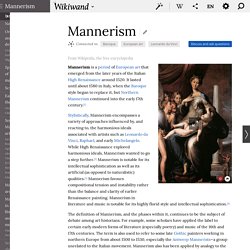
It lasted until about 1580 in Italy, when the Baroque style began to replace it, but Northern Mannerism continued into the early 17th century.[1] Stylistically, Mannerism encompasses a variety of approaches influenced by, and reacting to, the harmonious ideals associated with artists such as Leonardo da Vinci, Raphael, and early Michelangelo. Rome. World History Encyclopedia. Portal:History. Digital.library server at Penn Libraries. A Blog About History. Incas. British History Online. Mayans. This ‘secret’ Tube map shows the REAL distances between stations. So THAT’s why it takes ages to get from Kings Cross to Highbury and Islington!

A new Tube map shows off why takes ages to get between some London underground stations, despite them being right next to one another on the ‘traditional’ tube map. The new map – produced by TfL in response to a Freedom of Information request – maps the network layout, over the real distances between stops. The ‘normal’ London Tube map doesn’t reflect distances between stops – instead it’s designed so it’s easy to see different lines, and which zones stations lie in.
As a result, it’s been widely imitated by other railway networks around the world. MORE: Bad news, night owls – the Night Tube might not launch until March The ‘accurate’ map was produced in response to a request by James Burbage last year, and has circulated widely on social media this week. he next.
History/ Social Sciences Subject Guide. René-Théophile-Hyacinthe Laennec. René-Théophile-Hyacinthe Laennec[1] (French: [laɛnɛk]; 17 February 1781 – 13 August 1826) was a French physician.

He invented the stethoscope in 1816, while working at the Hôpital Necker and pioneered its use in diagnosing various chest conditions. He became a lecturer at the Collège de France in 1822 and professor of medicine in 1823. His final appointments were that of Head of the Medical Clinic at the Hôpital de la Charité and Professor at the Collège de France. He died of tuberculosis in 1826 at the age of 45. Early life and personality Laennec was born in Quimper (Brittany).
Invention of the stethoscope René Laennec wrote the classic treatise De l'Auscultation Médiate, published in August 1819.[2] The preface reads: Rosetta stone. Ever since its rediscovery, the stone has been the focus of nationalist rivalries, including its transfer from French to British possession during the Napoleonic Wars, a long-running dispute over the relative value of Young and Champollion's contributions to the decipherment, and since 2003, demands for the stone's return to Egypt.
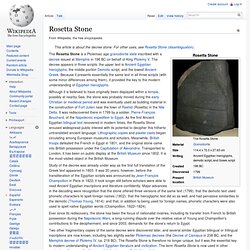
Description[edit] Original stele[edit] One possible reconstruction of the original stele The Rosetta Stone is a fragment of a larger stele. No additional fragments were found in later searches of the Rosetta site.[9] Owing to its damaged state, none of the three texts is absolutely complete. Documentaries, Ancient Discoveries and Civilization.
Warfare. Greek. H.M.S. Victory. History of Chinese art. Chinese art is visual art that, whether ancient or modern, originated in or is practiced in China or by Chinese artists.
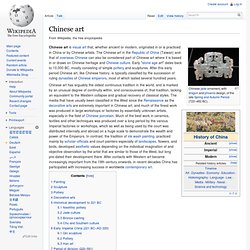
The Chinese art in the Republic of China (Taiwan) and that of overseas Chinese can also be considered part of Chinese art where it is based in or draws on Chinese heritage and Chinese culture. Early "stone age art" dates back to 10,000 BC, mostly consisting of simple pottery and sculptures. Louis XVI of France. The ensuing debt and financial crisis contributed to the unpopularity of the Ancien Régime which culminated at the Estates-General of 1789.
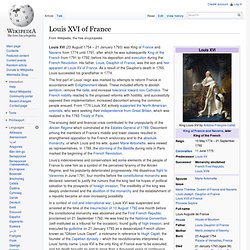
Discontent among the members of France's middle and lower classes resulted in strengthened opposition to the French aristocracy and to the absolute monarchy, of which Louis and his wife, queen Marie Antoinette, were viewed as representatives. In 1789, the storming of the Bastille during riots in Paris marked the beginning of the French Revolution. Louis's indecisiveness and conservatism led some elements of the people of France to view him as a symbol of the perceived tyranny of the Ancien Régime, and his popularity deteriorated progressively. His disastrous flight to Varennes in June 1791, four months before the constitutional monarchy was declared, seemed to justify the rumors that the king tied his hopes of political salvation to the prospects of foreign invasion. Childhood[edit]
Art of Ancient Egypt. Inventors. ART. European Prehistoric Art - Past Signs and Present Memories. Cardinal Wolsey's Today in History. The History of the Internet in a Nutshell. By Cameron Chapman If you’re reading this article, it’s likely that you spend a fair amount of time online.
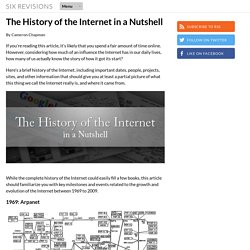
However, considering how much of an influence the Internet has in our daily lives, how many of us actually know the story of how it got its start? Here’s a brief history of the Internet, including important dates, people, projects, sites, and other information that should give you at least a partial picture of what this thing we call the Internet really is, and where it came from. Boudicca. Boudicca "She was huge of frame, terrifying of aspect, and with a harsh voice.
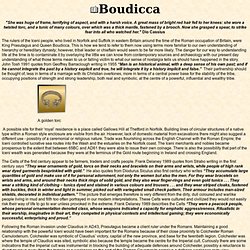
A great mass of bright red hair fell to her knees: she wore a twisted torc, and a tunic of many colours, over which was a thick mantle, fastened by a brooch. Now she grasped a spear, to strike fear into all who watched her. " Dio Cassius. Countess Godiva. Countess Godiva Lady Godiva by John Collier A legend is a valuable asset to any location, over the years attracting many pilgrims, visitors and tourists to the area associated with it; one has only to think of legendary figures like Robin Hood or King Arthur.
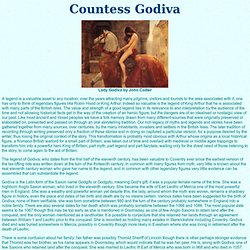
Indeed so valuable is the legend of King Arthur that he is associated with many parts of the British Isles. The value and strength of a good legend lies in its relevance to and interpretation by the audience of the time and not allowing historical facts get in the way of the creation of an heroic figure, but the dangers are of an idealised or nostalgic view of our past. Like most ancient and mixed peoples we have a folk memory drawn from many different sources that were originally preserved or elaborated on, presented and passed on through an oral storytelling tradition. The History Network. Archives: Valuable resources on IBM's history. Gallo Roman. Archaeology - AllAboutArchaeology.org.